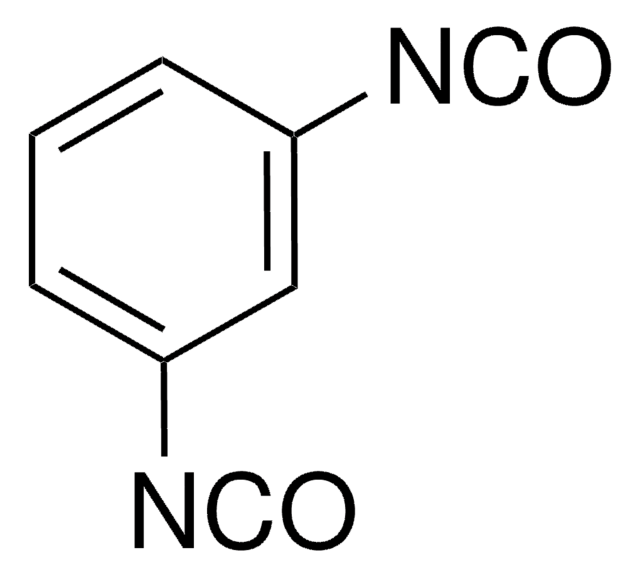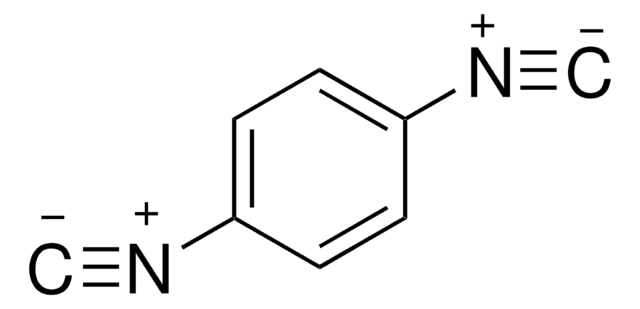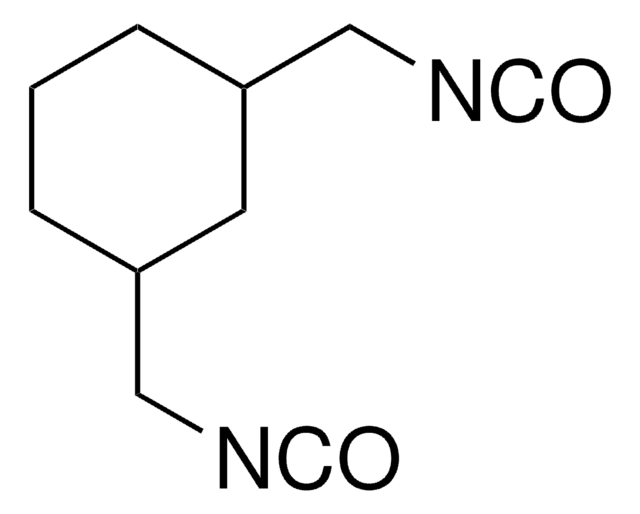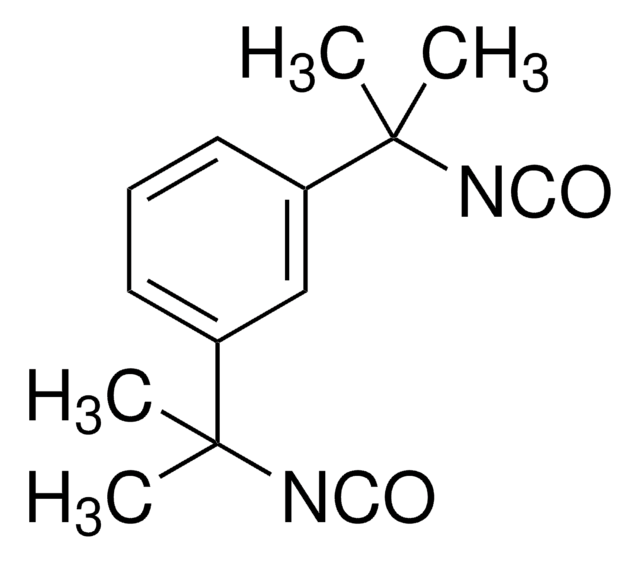262242
1,4-Phenylene diisocyanate
Synonyme(s) :
1,4-Diisocyanatobenzene, p-Phenylene diisocyanate
About This Item
Produits recommandés
Pression de vapeur
<0.01 mmHg ( 20 °C)
Niveau de qualité
Forme
solid
pb
260 °C (lit.)
Pf
96-99 °C (lit.)
Solubilité
THF: soluble
acetone: soluble
ethyl acetate: soluble
toluene: soluble
Groupe fonctionnel
isocyanate
Chaîne SMILES
O=C=Nc1ccc(cc1)N=C=O
InChI
1S/C8H4N2O2/c11-5-9-7-1-2-8(4-3-7)10-6-12/h1-4H
Clé InChI
ALQLPWJFHRMHIU-UHFFFAOYSA-N
Catégories apparentées
Application
- A reactant to synthesize high yield polymers via criss-cross addition polymerization reaction with alkyl aldazines in pyridine.
- An organic building block to prepare adamantyl-containing diurea and thiourea derivatives applicable as potent mammalian and human soluble epoxide hydrolase inhibitors.
- A coupling agent to synthesize polyethylene glycol (PEG)/silica composite material using dibutyltin dilaurate (DBTDL) as a catalyst.
It can also be used:
- As a cross-linking reagent to investigate the mechanism of enzyme immobilization on silanized surfaces.
- In the synthesis of the dipodal bis-urea receptor, a selective receptor for hydrogen sulfate.
- In the deposition of polyurea resists films via molecular layer deposition.
Mention d'avertissement
Danger
Mentions de danger
Conseils de prudence
Classification des risques
Acute Tox. 2 Inhalation - Aquatic Chronic 2 - Eye Irrit. 2 - Resp. Sens. 1 - Skin Irrit. 2 - Skin Sens. 1
Code de la classe de stockage
6.1A - Combustible acute toxic Cat. 1 and 2 / very toxic hazardous materials
Classe de danger pour l'eau (WGK)
WGK 3
Point d'éclair (°F)
>235.4 °F - closed cup
Point d'éclair (°C)
> 113 °C - closed cup
Équipement de protection individuelle
dust mask type N95 (US), Eyeshields, Faceshields, Gloves
Faites votre choix parmi les versions les plus récentes :
Déjà en possession de ce produit ?
Retrouvez la documentation relative aux produits que vous avez récemment achetés dans la Bibliothèque de documents.
Les clients ont également consulté
Notre équipe de scientifiques dispose d'une expérience dans tous les secteurs de la recherche, notamment en sciences de la vie, science des matériaux, synthèse chimique, chromatographie, analyse et dans de nombreux autres domaines..
Contacter notre Service technique















